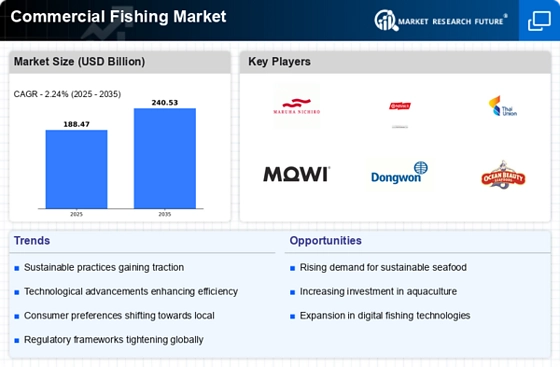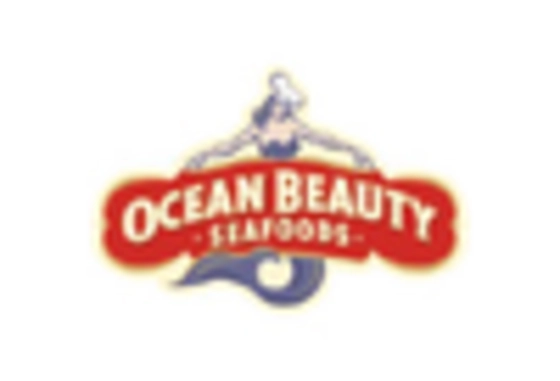Global Trade Dynamics
The Commercial Fishing Industry, influencing supply chains and market access. Trade agreements and tariffs can significantly impact the flow of seafood products across borders. In recent years, trade tensions have led to fluctuations in seafood prices, affecting both producers and consumers. For instance, in 2023, it was reported that seafood exports from certain regions faced increased tariffs, which could potentially limit market access for some companies. Conversely, favorable trade agreements may open new markets for exporters, driving growth opportunities. As the industry navigates these complexities, adaptability and strategic planning will be essential for businesses aiming to thrive in an ever-changing trade environment.
Regulatory Frameworks
The regulatory frameworks governing the Commercial Fishing Market are evolving, reflecting a growing emphasis on sustainable practices. Governments are increasingly implementing stricter regulations to manage fish stocks and protect marine ecosystems. For instance, quotas and licensing requirements are becoming more prevalent, which may influence operational costs and market dynamics. In 2023, it was reported that over 50 countries had adopted new fishing regulations aimed at reducing overfishing. This trend suggests that compliance with these regulations could drive innovation and efficiency within the industry, as companies seek to adapt to changing legal landscapes. Furthermore, adherence to these frameworks may enhance the reputation of businesses, potentially leading to increased consumer trust and market share.
Environmental Awareness
Environmental awareness is significantly shaping the Commercial Fishing Market, as consumers and stakeholders increasingly prioritize sustainability. The growing concern over overfishing and its impact on marine ecosystems has prompted a shift in consumer behavior, with many opting for sustainably sourced seafood. In 2023, surveys indicated that over 70 percent of consumers were willing to pay a premium for eco-friendly products. This trend is influencing market strategies, as companies adopt sustainable practices to appeal to environmentally conscious consumers. Additionally, partnerships with environmental organizations are becoming more common, enhancing brand reputation and consumer loyalty. As awareness continues to rise, businesses that prioritize sustainability may gain a competitive edge in the market.
Rising Demand for Seafood
The rising demand for seafood is a pivotal driver in the Commercial Fishing Market, influenced by changing dietary preferences and population growth. As consumers increasingly seek protein-rich diets, seafood consumption has surged, with global seafood demand projected to reach 200 million metric tons by 2025. This trend is particularly pronounced in emerging markets, where economic growth is driving higher consumption rates. The increased demand places pressure on fishing operations to enhance production while maintaining sustainability. Consequently, the industry is likely to explore aquaculture and responsible fishing practices to meet consumer needs without depleting marine resources. This dynamic could lead to a more competitive market landscape, as companies strive to balance profitability with environmental responsibility.
Technological Integration
Technological integration within the Commercial Fishing Market is transforming traditional practices, enhancing efficiency and sustainability. Innovations such as GPS tracking, automated fishing gear, and data analytics are being adopted to optimize fishing operations. For example, the use of sonar technology has improved catch accuracy, reducing bycatch and waste. In 2023, it was estimated that the adoption of technology in fishing operations could increase productivity by up to 30 percent. This shift not only boosts profitability but also aligns with sustainability goals, as more efficient practices can lead to better resource management. As technology continues to advance, it is likely that the industry will see further improvements in operational efficiency and environmental stewardship.

















Leave a Comment